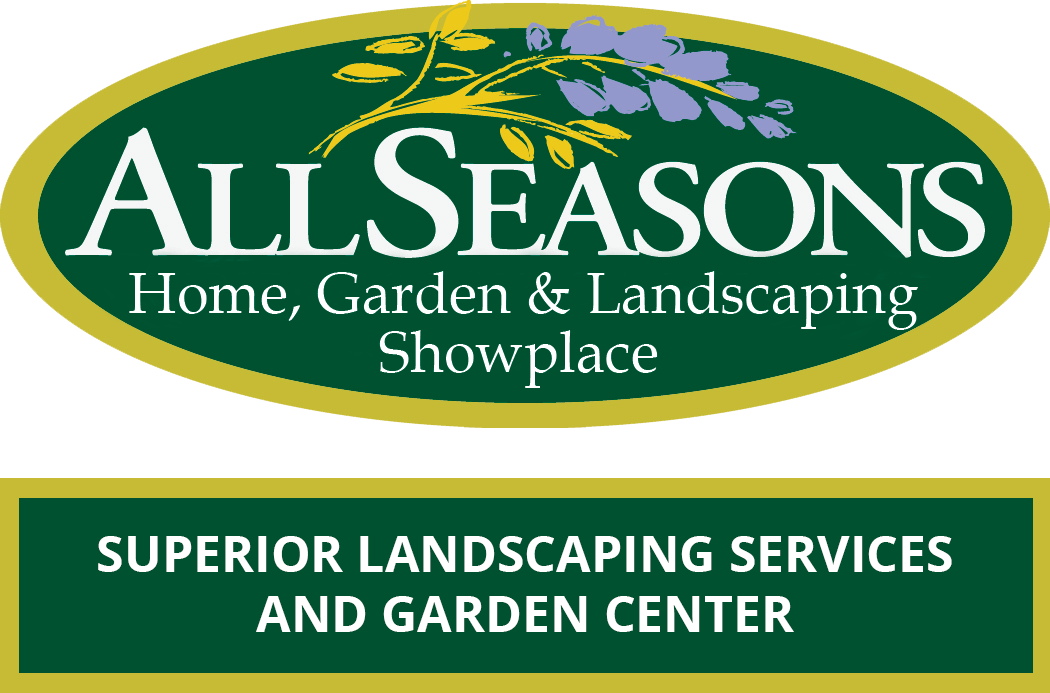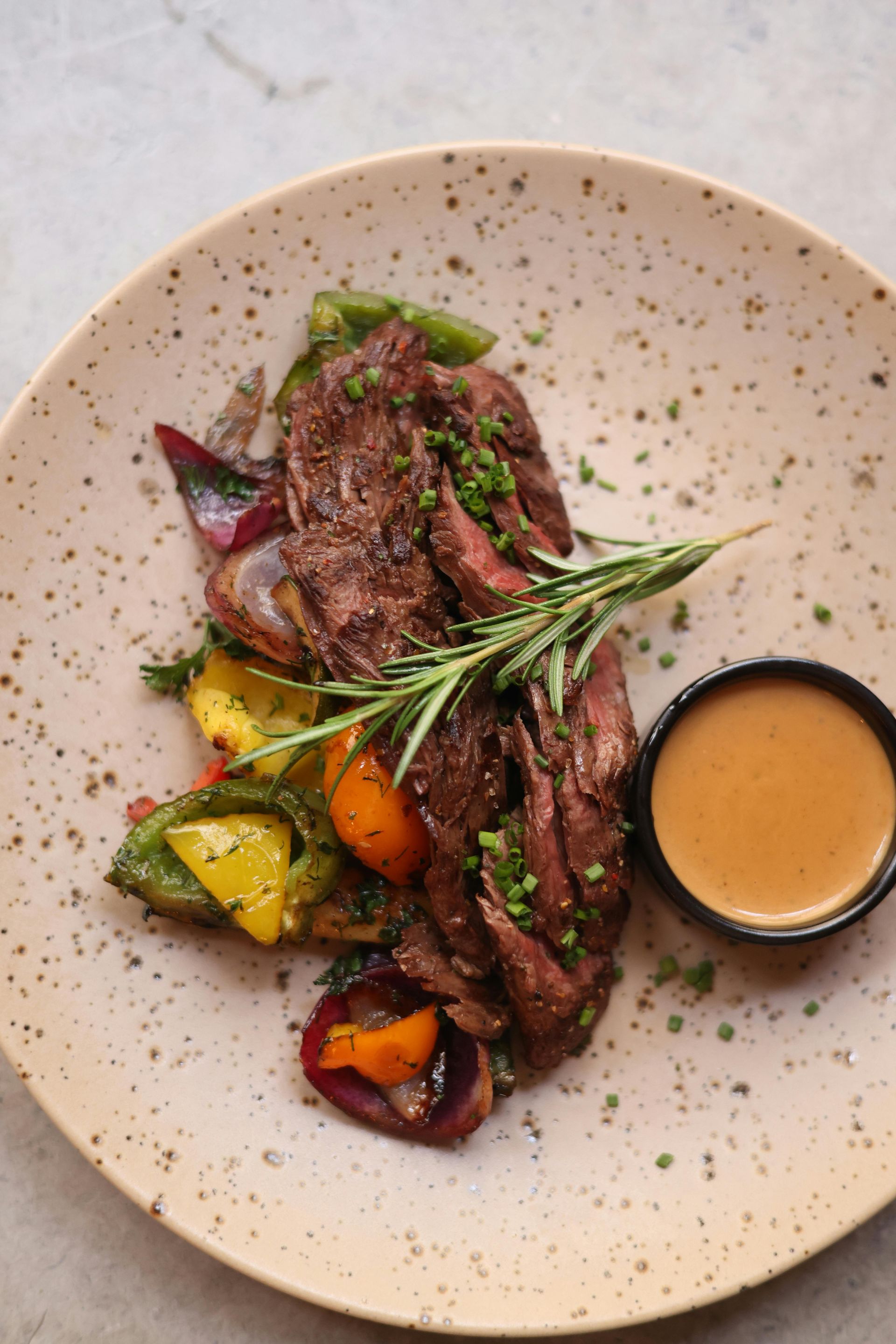
Just because the weather outside is frightful doesn’t mean you have to give up on your green thumb. Many herbs do well indoors as long as they are given enough light. A bright kitchen window or sunny southern exposure will work just fine. Keep them lightly watered and trim often for vigorous growth. Rosemary Nothing says Christmas like that woodsy, piney, Christmas tree scent, and the herb Rosemary is an excellent substitute! From trailing forms to upright shrubs that can actually be pruned into a cone, like a fir or spruce, Rosemary has the look and smell we so love! Perfectly hardy and happy outdoors, it is still nice to bring one in for the holidays! Thyme Thyme is a low-growing savory herb from the Mediterranean, and they can benefit from being grown in a container indoors, especially during our wet winters. For an extra dash of class, try silver thyme, or gold-variegated lemon thyme, which is savory but also sweet and fruity! Sage Sage is a classic kitchen herb, but it goes dormant if left out in winter. Those who desire sage for winter cooking will probably have to grow it indoors. Variegated forms offer beautiful colors on their leaves, with the same wonderful flavor. Parsley Parsley is a culinary favorite for all seasons, and it can be grown outdoors, or indoors in a sunny window in winter. Most food dishes are prepared with Italian flat parsley, but growing curly parsley can impart the same flavors while giving extra pizzazz, both on the windowsill and as a garnish for your favorite dishes. When applying fresh herbs to your recipes a good rule of thumb is 3/1. If your recipe calls for 1 tsp of dried thyme use 3 tsp of fresh.

It's time to select your Christmas tree! Here, we have your tree BY NAME! How about having "The Hulk" or "Minnie Mouse" in your living room? Always make sure your tree receives a fresh cut before taking it home. We do this for you! When selecting, cup your hand at the base of a branch and run up down the length of the branch. If the needles have a healthy green color, are soft and hold fast, the tree is fresh. Christmas trees need a stand. Make sure it is large enough to hold at least one gallon of water. Replenish the water as needed, never letting the water level drop below the bottom of the trunk. Add tree preservative to the water to help keep it fresh longer. DECEMBER TO DO LIST: -Plant cool-season annuals & vegetables -Lower lawn mower blades for cool-season lawns -Stop feeding St. Augustine lawns -Place a bird feeder in the garden since natural food sources may not be available as much for birds -Freshen up container gardens -Divide and replant all clumping perennials -Plant all kinds of hardy plants {trees, shrubs, perennials & vines} -Reduce water on deciduous fruit trees -As bulb foliage yellows and goes dormant, separate and replant for next season's bloom -Pansies and other cool-season annuals benefit from using blood meal when planted in order to keep the older foliage healthy. - Apply Turf & Ornamental Weed & Grass Stopper by Hi-Yield containing Dimension in flower beds to prevent cool weather weeds from growing. Try to apply right before a rainfall or deeply water in. -Apply fresh bed dressing (mulch, straw, etc.) to flowerbeds to help prevent winter weeds and to insulate the roots of landscape plants -Water landscape plants every 7-10 days or as needed - Do NOT prune landscape plants back yet, wait until mid-January to early February. Pruning back now may promote new growth. Tender vegetation is much more susceptible to cold damage, which may occur if we have a strong cold front in January. Also, remember not to prune azaleas until after they bloom in the spring.
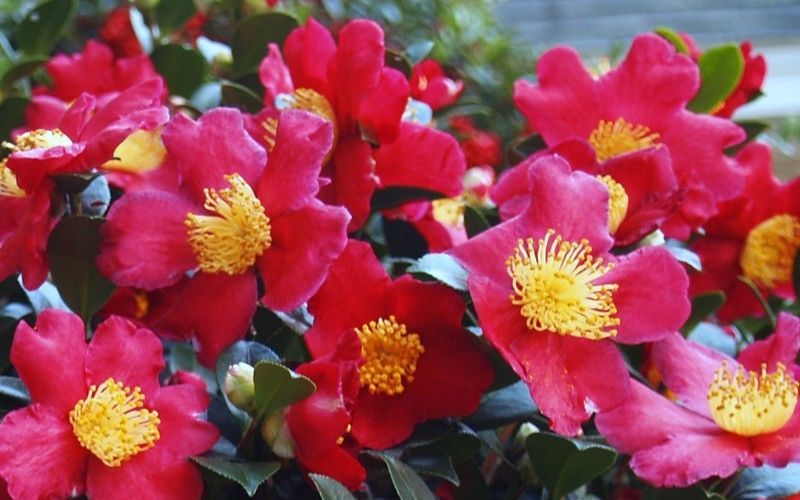
Camellias sasanquas are often dressed up for the holidays by blooming at this time of the year, which makes them ideal landscape shrubs in your landscape. This festive beauty, with the equally festive name, blooms throughout the holiday season with an abundance of large, ruffled, long-blooming, red flowers and a bright yellow center that shines like Rudolph’s nose! In addition to its striking holiday look, it has attractive, glossy, dark-green evergreen foliage. You will enjoy the blooms from the holiday season well into early Spring. To keep this camellia in “holiday spirits” all year long, provide rich, acidic, moist (but not standing water) and well-drained soil. They will reach 5 feet tall, and will spread about 6 feet wide. It does best in partial to full shade. Please note that it does not like direct afternoon sun, especially in our summer heat. This is a relatively low maintenance shrub, and should only be pruned after flowering to avoid removing any of the current season's flowers. We recommended the Yuletide Camellia for the following landscape applications: § Accent § Mass Planting § Hedges/Screening § General Garden Use § Container Planting If you’re planting it in a container, it would be an ideal “thriller” since it has an upright growth habit. Plant it near the center of the pot, surrounded by smaller plants and those that spill over the edges. It is even sizeable enough that it can be grown alone in a suitable container. Also note that when growing plants in outdoor containers and baskets, they may require more frequent waterings than they would in the yard or garden. Celebrate the Yuletide with a Yuletide! Click here to learn more about the Yuletide Camellia.
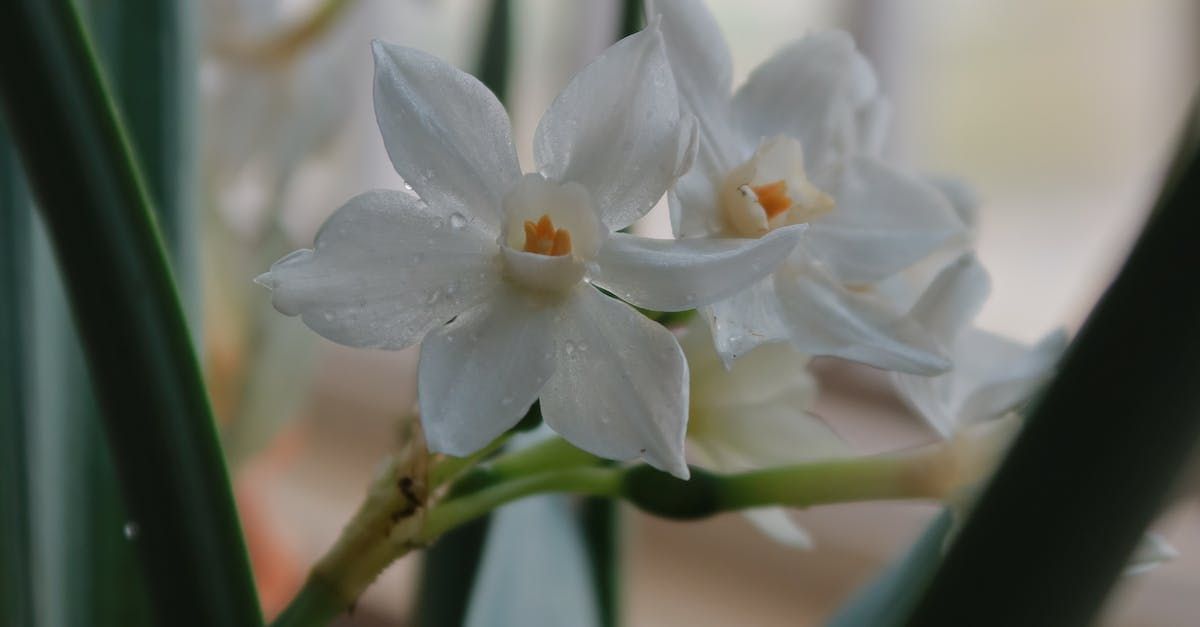
Decorate your home for the holidays with these colorful houseplant options. Poinsettia Loved for their big, bright, red blooms, these classic holiday plants are actually tropical plants, making poinsettias the perfect houseplant candidate year-round. If displayed outdoors, be sure to bring in on nights below 40 degrees! Click here to read more about Poinsettias. Click here to read more about Poinsettia Care through Winter + Beyond Amaryllis and Paperwhites (Narcissus) Amaryllis and Paperwhite bulbs bought from the nursery have been “forced” to bloom inside during the winter months and help create an exotic display when grouped together. When flowers fade in January, trim back the flowering stem and plant outdoors; they will bloom again in the spring! Click here to read more about Amaryllis. Alyssum Small, fragrant white flowers resemble a powder snow when planted in mass as a landscape border. Add in any holiday porch planter as fillers to bring a soft look to other holiday plants. The sweet smell will welcome your holiday company! Anthurium Anthurium is a tropical plant that shows off shiny, dark green foliage with flowers that can be red, yellow or green. They like light shade, and a warm and humid atmosphere, so misting is beneficial. Anthuriums offer a relatively long bloom time and easy rebloom, so they are much easier than many other flowering houseplants! Cyclamen Cyclamen is an essential part of the winter garden that can also be potted and kept indoors. Cyclamen are loved for their colorful blooms and dark green foliage that last throughout the winter. Cyclamen love cool weather outdoors, so when inside, they must be kept away from heater vents, and might like being set next to a cool window! Click here to read more about Cyclamen. Norfolk Island Pine You may recognize the Norfolk Island Pine as the small tree offered in many stores and garden centers around Christmastime, often covered in a layer of glitter. Be careful: this conifer is adapted to warm-weather, and will perish in cold climates. Bring in on nights that frost is expected! Fiddleleaf Fig The fiddleleaf fig tree has large, attractive leaves and can grow up to six feet or more. The tree thrives in humidity, so place it in a warm, sunny spot and run a humidifier in the winter months, or mist the leaves regularly if heaters are run high. Christmas Cactus The Christmas cactus is perfect for a tall pot or a hanging basket, which allows the long, bright green stems terminating in red, white, pink, purple or orange flowers to rain down in the fall and winter. Christmas cactus grown indoors year-round must be forced to bloom, as the indoor environment doesn’t provide the conditions necessary to trigger a bloom. Read or article about Christmas cactus to learn how to make them bloom! Click here to read more about Christmas Cactus. Bromeliads Bromeliads are loved for their striking, colorful foliage. Keep these tropicals in a warm location that receives plenty of light for the best chance of blooming, but don't be disappointed if yours doesn't bloom, or only blooms once. Peperomia Peperomia are small houseplants with interesting foliage that varies depending on the variety. They love humidity, so water often and consider keeping in the bathroom. The perfect plant to give as a gift to the budding plant enthusiast in your family! Kalanchoe Kalanchoe is a thick-leaved succulent that naturally produce flowers in a variety of colors, most commonly red, pink, yellow and white. Kalanchoe blossfeldiana is one of the most widely available varieties. Keep your kalanchoe in a warm, sunny window and let the soil dry between waterings.
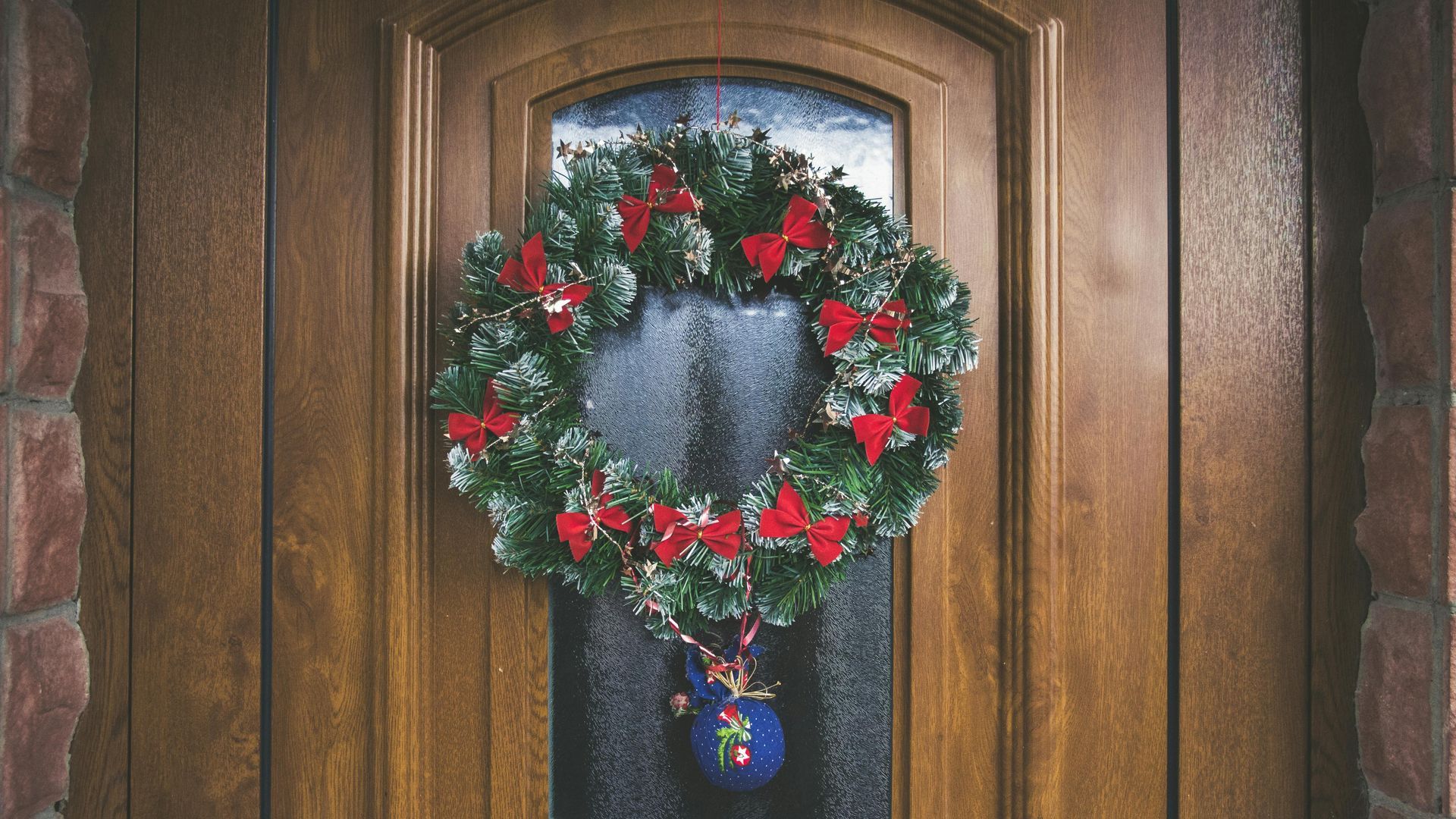
Trees need to be placed in water with tree preserve within 30 minutes of receiving a fresh cut! On its first day in your living room, it can go through a gallon of water, so make sure to keep water in the stand! To avoid it drying out and becoming brittle, don’t place it around a fireplace or other heat source. Do not water snow flocked trees! Click here to watch our Clip Tip on Christmas Tree Tips! Ready for an easy and quick decorating tip? Use ball garland in your trees or wreaths! These unique garland strands are loaded with shiny baubles ready to trim your tree! All you have to do is wind the wire frame through your sections and voila- it looks a lot like Christmas! Click here to watch our Clip Tip on Decorating with Ball Garland! Deck your halls with fresh fir wreaths and garlands! When you first purchase them, soak them in a bathtub or large sink. Around the middle of the month, soak them again to keep them fresh, merry and bright! Anytime they look like they are dry, spray them with water or soak them for a quick re-fresh! Click here to watch our Clip Tip on Fresh Garland and Wreath Care! They’re the most memorable plants of the year: Poinsettias, Christmas Cactus, Cyclamen, Lemon Cypress, Holly, Norfolk Pines, Amaryllis and Rosemary. Click here to watch our Clip Tip on Holiday Plants! Amaryllis bulbs are easy to grow and produce blooms to captivate you. Plant the bulb up to its neck in the soil, and press the soil down firmly to set the bulb securely in place after planting. They flower from late December until the end of June for lasting beauty. Click here to watch our Clip Tip on Amaryllis Bulbs! DIG container gardening by planting a thriller, fillers and spillers for eye-catching fall containers! Use a powerful blend of soil ideal for container gardening such as Happy Frog, Ocean Forest or Strawberry Fields. Watch your pots explode in color! Click here to watch our Clip Tip on Cool Season Containers! Apply Winterizer on all types of grasses, trees, and shrubs now in fall to help build vigorous root systems during the winter months ahead! Winterizer enhances winter hardiness and promotes earlier green up of your plants come Springtime! Click here to watch our Clip Tip on Winterizer! Click here for more information on Winterizer.
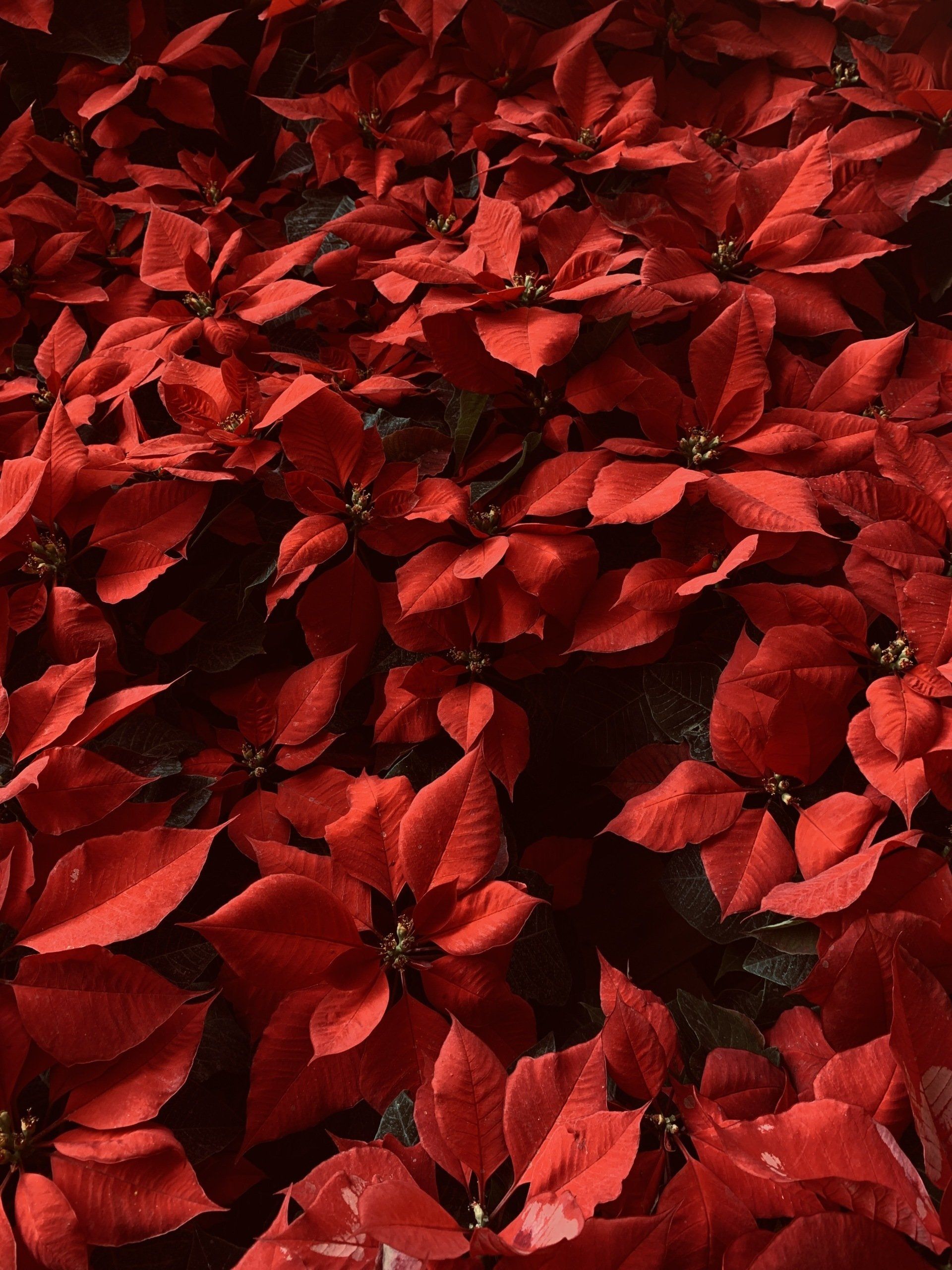
This iconic holiday plant has tropical roots. Get tips on keeping your poinsettia looking its best all year. Perhaps no flower represents the winter holidays like the poinsettia. However, these festive plants, which range from the traditional red to pale yellow, can be mysterious when it comes to care and maintenance. Here are some tips on poinsettia care that can help extend those blooms as long as possible – and maybe even encourage your poinsettia to bloom again next year: Warm and Bright: It may seem strange due to their holiday connotations, but poinsettias are tropical plants. Provide lots of sunlight — a sunny window with east, west, or southern exposure is best. Also try to keep the temperature between 65 and 70 degrees F during the day, keeping in mind that the area around a drafty window can be quite a bit cooler than the rest of the room. If your plant’s leaves are touching a cold window, they may drop off. At night, poinsettias like a slightly lower temperature (55 – 60 degrees F), but avoid drastic drops in temperatures. Hydrated and Humid: Make sure to water the poinsettia whenever the surface of the soil feels dry. Give the plant a good watering, but don’t flood or soak it – gravel in the bottom of the pot will help keep the roots dry. If your home is dry during the winter months, a humidifier or plant mister can help your plant stay hydrated. Prevent Leaf Loss: If your plant starts to lose leaves, there are a few likely culprits: is the plant resting against a cold window or near a draft? Is it too warm or dry in the room? Is the plant thirsty? With correct care, poinsettias can be encouraged to re-bloom next holiday, but it’s a touchy and time-consuming process that not all poinsettia fans are prepared for. Save for the Coming Year: First of all, after bloom time, in the spring, poinsettias can benefit from a period of semi-dormancy. You should slow down the watering to weekly at most. Old leaves may shrivel and drop; this is perfectly okay! At this time, you can cut back the plant’s stems to encourage fresh growth. At this point, when things warm up a bit in spring, it is okay to put it outdoors in a sheltered location such as a covered porch or patio. Pinch back the plant throughout the growing seasons to keep it compact and bushy; poinsettias can get quite large! Repot into a larger container if necessary. Prepping the Plant for Bloom: Now, to get it to bloom ! It may still be warm in early October, but now it is time to bring it indoors. Every night for at least 6 weeks, put the poinsettia in a completely dark room, like a laundry room or closet, for about 14-16 hours EVERY night. The change in photoperiod is what encourages the poinsettia to change color and bloom. This will happen naturally outdoors, but not in time to have a color change by Christmas, and the plant cannot endure the cooler weather outdoors, so the dark room indoors is the preferred method. Showing Its Holiday Cheer: After doing this throughout October and November, the tops leaves of the plant should emerge red (or white, or pink, depending on your variety), and it should bloom! The showy part of the poinsettia are the leaves, but small yellow flower will emerge from the red fresh growth.
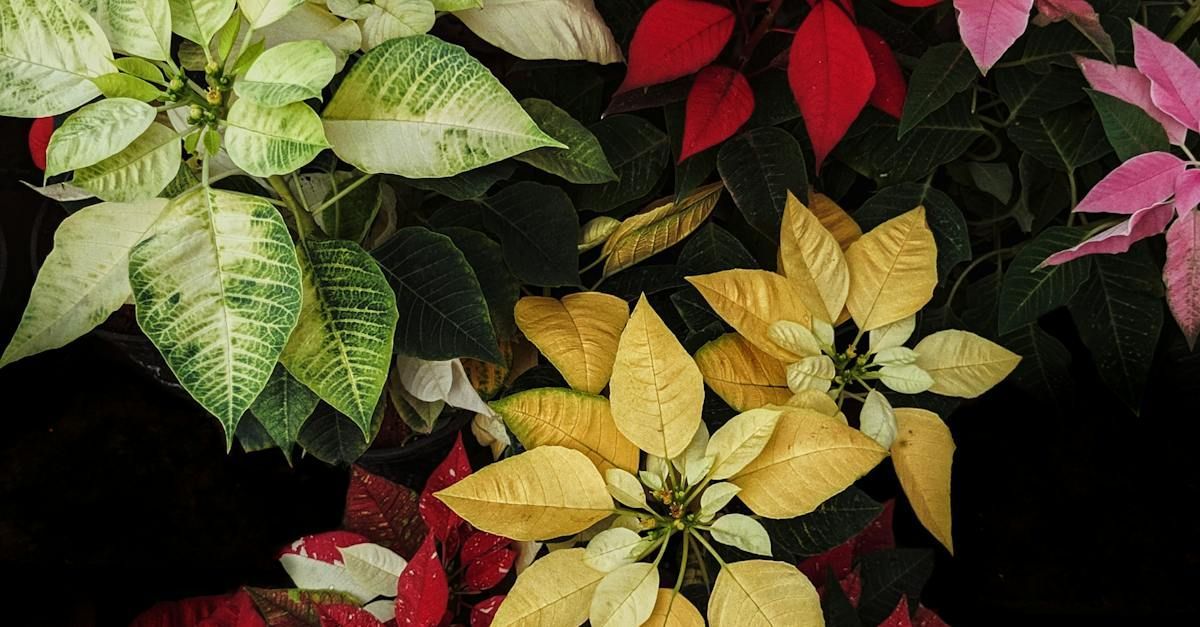
Poinsettias (Euphorbia pulcherrima) are one of the most popular winter and Christmastime plants. They can be found this time of year in retail outlets and florists and now even in grocery stores. The gorgeous display of bright red against dark green foliage is the perfect combination to match our traditional Christmas palette of red and green. These colors have been used for decorative purposes during winter months dating back to Roman times with the celebration honoring the god Saturn each year between Dec. 17 and 23. The tradition was carried on by Christians as early as the 1300s. Native to Mexico and Central America, the poinsettia grows naturally in the landscape in moist areas that get six to eight hours of indirect sunlight. The Aztecs of Mexico cultivated and used poinsettias for decorative purposes in religious ceremonies, medicinal purposes and as a reddish-purple dye. Poinsettias get their name from Joel Poinsett. A member of the U.S. House of Representatives from South Carolina, he was a physician and minister to Mexico in the early 1820s. Poinsett sent the plant back home to South Carolina and shared it with other plant enthusiasts. Since then it has been grown and used by florists and decorators alike during the winter. Highly cultivated, hundreds of varieties come in shades of red, white and pink and mottled or striped combinations of the colors. Poinsettias do well in containers indoors year-round in well-lit areas protected from drafts and outdoors on patios or protected from full sun during the warmer months. The showy colors of the poinsettias are not flowers. They are actually modified leaves called bracts. The actual flowers are the yellow centers of the bracts. When grown naturally in its native setting, the plant is a large shrub or small tree that grows up to 10 to 15 feet high. As a potted plant, they usually only grow 1 to 2 feet tall. To care for it, water the plant when the soil dries. They do not like to be too wet or too dry. Water at the base of the plant directly on the soil. The plant produces a milky sap that may irritate those who are sensitive to latex. If eaten in large quantities, the sap may cause a mild irritation or possible nausea for pets, especially small kittens and puppies who just love to destroy plants. However, poinsettias are not poisonous, according to a study at The Ohio State University. The best way to select a poinsettia is to look for one that has at least six or more bracts extending over the lower green leaves. Inspect the leaves — they should not droop — and check underneath for pests such as white flies. The longest-lasting poinsettias will have no pollen or sap in the yellow flowers in the center of the bracts. If they have begun to show yellow pollen and sap, poinsettias will not provide a display for much longer. A poinsettia should last for four to six weeks in the home if properly cared for. Once Christmas is past, plants may continue to look good into spring. After that, some folks just throw them away or compost them. They can be transplanted into the yard, but you may lose them during hard freezes if not protected. South sides of the house will be the most protected. Before planting, cut them back to one-half their size. You can also try to get your poinsettia to bloom again for the following year. Poinsettias are short-day plants. That means they set buds and make flowers when the nights lengthen in fall and winter. To help the plant flower and develop the colored bracts, it must receive six to eight hours of indirect sunlight during the day and 14 hours of darkness at night for 40 days straight, starting about Oct. 1. You can do this by covering the plant with a black plastic bag to the ground every afternoon and continuing the practice daily until color shows in the bracts. I’ve successfully done this — with patience. Article by LSU Ag Center. Visit online here.
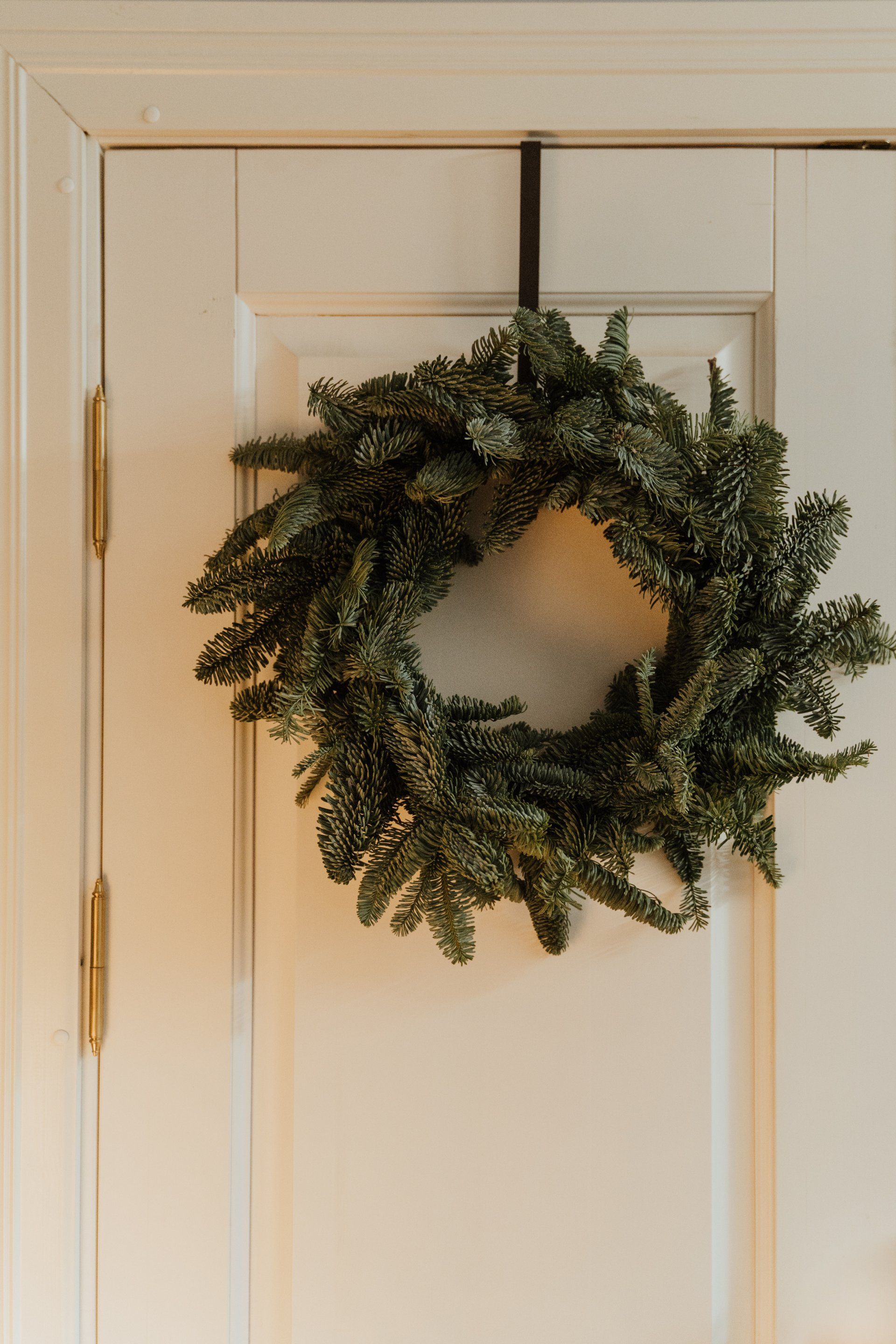
Live wreaths, garland, door charms, centerpieces and more are great for showing the spirit of Christmas in your home! They add ambience and a terrific “Christmassy” scent in the air. Here are some tips on keeping your fresh greenery lasting through the season: Submerge your greenery in a large container of water for a few hours or overnight. Select a location out of direct sunlight (for outdoors) or away from heat or warm air (for indoors) To help balance the moisture greenery releases, mist it with a spray bottle of water every few days. If your greenery starts to dry out or doesn't appear fresh, just re-submerge it in water for a few hours. You'll be surprised how it livens up your greenery!
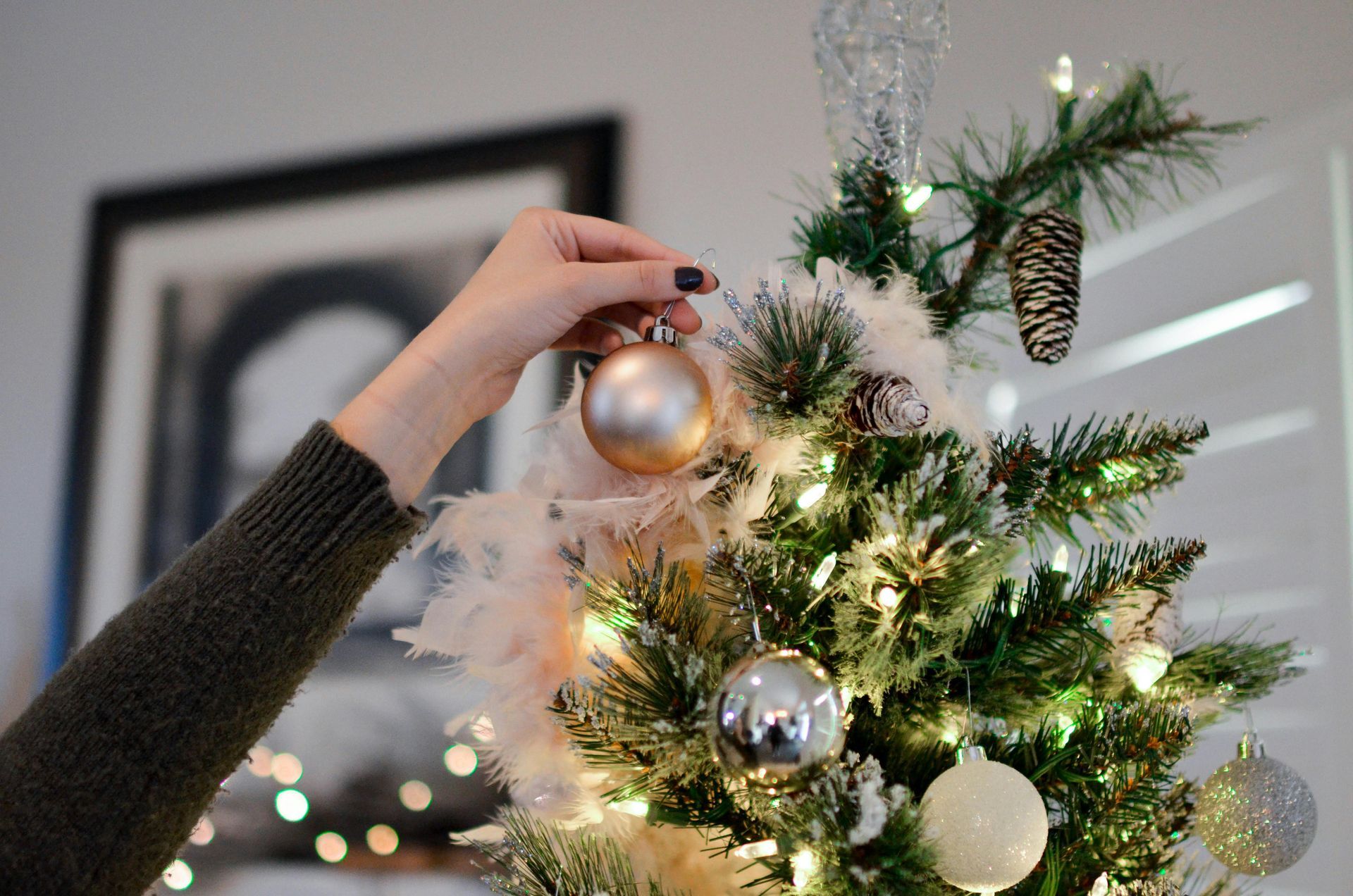
Christmas Tree Decorating is not an exact science but more of an art. There are no fixed rules. Unfortunately, one size does not fit all, but this guide can be used to loosely help instruct you, the designer, on how many of each item you may need for your project. A lot of people start with light coverage and add to their tree every year until they achieve the desired look. We are STOCKED full of ribbons in every shade of Christmas theme you can imagine- from whimsical to elegant to traditional to blue. We also have a huge selection of sprays and stems as well as ornaments to create the look you’re dreaming about! Shop our garden center for your fresh cut Christmas tree, then step inside the gift shop to dress it up! It is up to you to decide what look you like best. Some choose to incorporate more ornaments than sprays and stems and vice versa. Also, ribbon is a great space filler. And you will need to keep in mind how much ribbon you want to use in your tree when choosing ornaments, stems, and sprays. You will need to make adjustments to this guide based on whether you are filling up the entire tree/all sides or if you are only filling up 3/4 of the tree because only 3/4 of the tree is showing due to it being in a corner location. How many ornaments do I need to decorate ALL SIDES of my tree? Ornaments can be anything other than a spray or stem. Mix and Match. Ornaments could include birds, ball ornaments, character ornaments, and more. Use 3/4 of the total below if you are only decorating 3/4 of your tree with the back in a corner. You may also consider using less than the amount below if you want to use more sprays and stems in place of ornaments. Keep in mind, if you are wanting ornaments larger than 10 inches, you don't need as many of them to fill up the same amount of space. Tree Height Light coverage where you can still see the tree. Keep in mind how many stems and sprays you want to use. Heavy coverage where most of the tree is covered. Ornament Sizes 6.5 ft 70 pieces 100 pieces 4-10 in 7.5 ft 105 pieces 135 pieces 4-10 in 9-10 ft 180 pieces 215 pieces 4-10 in How many sprays/stems do I need to decorate ALL SIDES of my tree? Feel free to mix and match. The below are estimated totals depending on your tree size. You may decide you want to use more ornaments in place of stems and sprays. Use what makes you happy. Tree Height Light coverage where you can still see the tree. Keep in mind how many ornaments you want to use. Heavy coverage where most of the tree is covered. Spray/Stem Sizes 6.5 ft 35 pieces 50 pieces 7-48 in 7.5 ft 45 pieces 60 pieces 7-48 in 9-10 ft 60 pieces 75 pieces 7-48 in How many rolls of ribbon do you I need to decorate my ENTIRE tree? The amount of ribbon depends on the tree's width and your technique. It also depends on if you want enough ribbon to make a bow as a tree topper, or if you are only wanting to weave the ribbon throughout your tree. The guide below is intended to help you have enough ribbon to weave throughout your tree. We suggest starting with 3 yards of ribbon for every foot of tree. For example, you will need around 22.5 yards for a standard Christmas tree. Adjust the length based on whether you want streamers and if you are planning to tuck the ribbon into the tree versus allowing it to cascade down the tree. Tree Height Ribbon Length 6.5 ft 19.5 yards 7.5 ft 22.5 yards 9-10 ft 27-30 yards
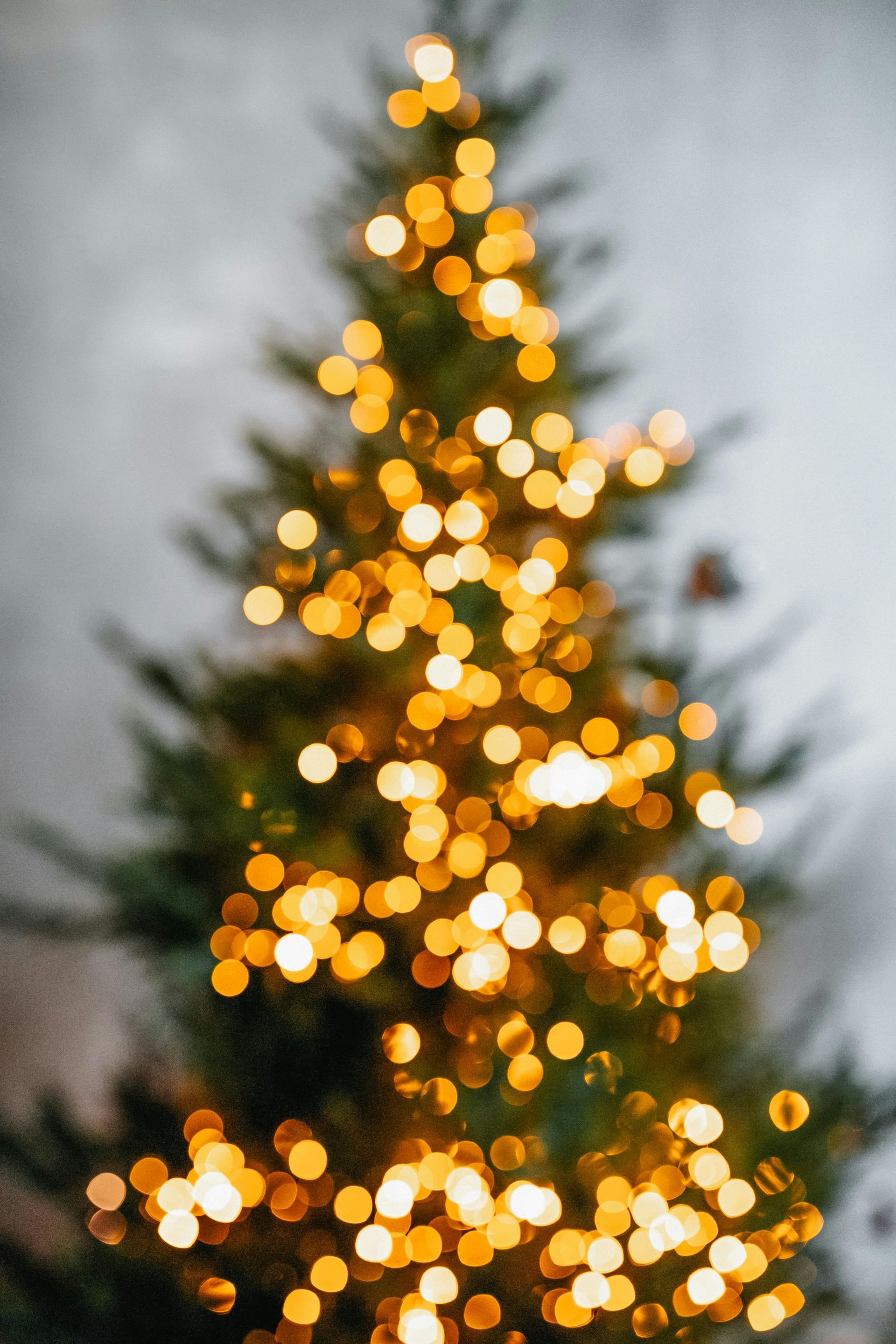
We offer you fresh cut Christmas trees, each with a special name! These varieties of Christmas trees are fat, full and healthy. Below are some tips to assure your Christmas tree will stay fresh for the whole season: · Purchase a Tree Preservative to add to the water in your tree stand. This specially developed formula helps promote liquid absorption and needle retention. Contents include fiber softeners and essential nutrients and minerals to help maintain a fresher and safer Christmas tree. Natural evergreen fragrance in liquid preservative adds to the holiday experience. It is pet safe as well! Provides nutrients to keep tree fresh Helps prolong needle retention Scented with natural evergreen oils When you get home, place your tree in its selected location and add tree preservative and water to fill the stand right away. The tree should be out of water for as little time as possible! 30 minutes to an hour is about the maximum time you want to allow. Make sure you check the water level in your stand daily for the first week or so. Your tree will absorb more water during this period. Don't worry if your tree slows down or even stops "drinking" water close to Christmas, this is a common occurrence. Once at home, close any A/C or heater vents close to where your tree is located. Otherwise, the air blowing on the tree will dry it out. Christmas trees look great framed in a big living room window, but the sunlight may contribute somewhat to branches drying out. Consider having a sheer curtain to spread across the window, and close it at least in warm, sunny days. Always be sure to turn off your lights when you are not at home or are going to bed, especially if you have incandescent lights. Newer LEDs are more expensive, but they last YEARS longer and have very little heat output, so they are much safer and more earth-friendly in a variety of ways. You may choose to put your lights on a timer. · We offer lighting and snow flocking services. If your tree is flocked, do not water it!
